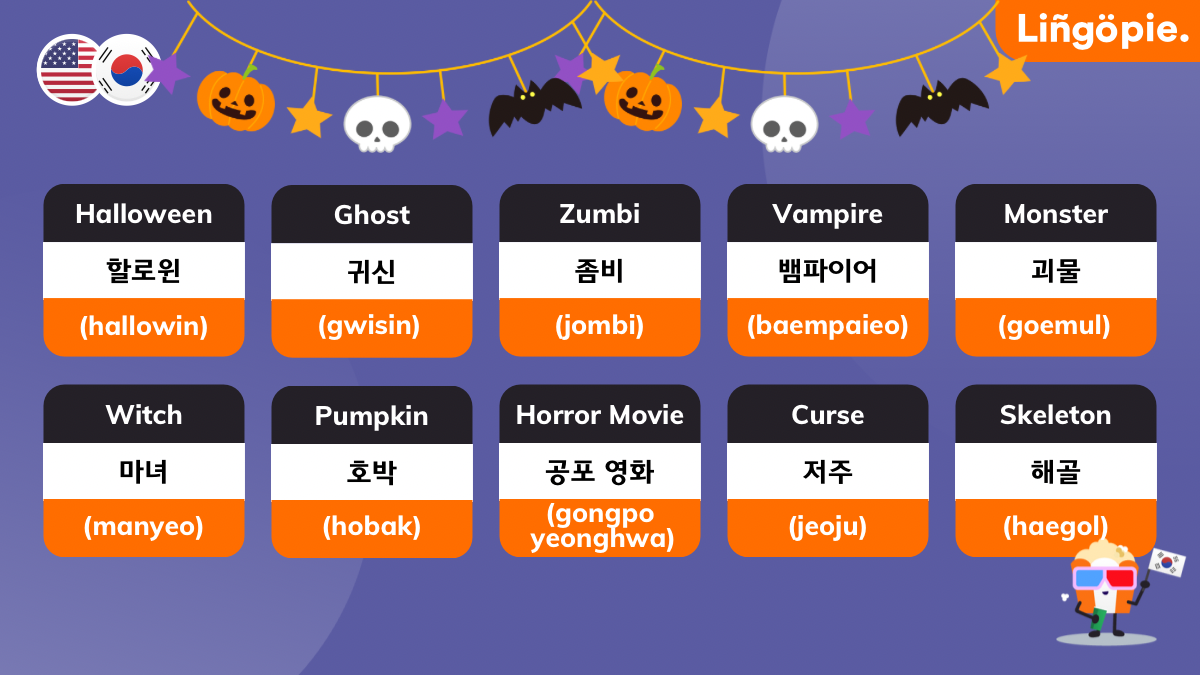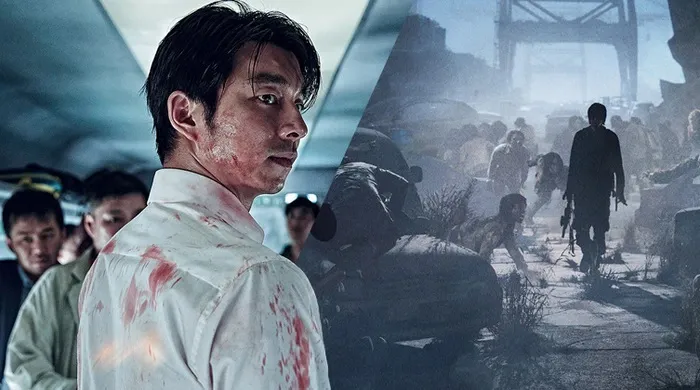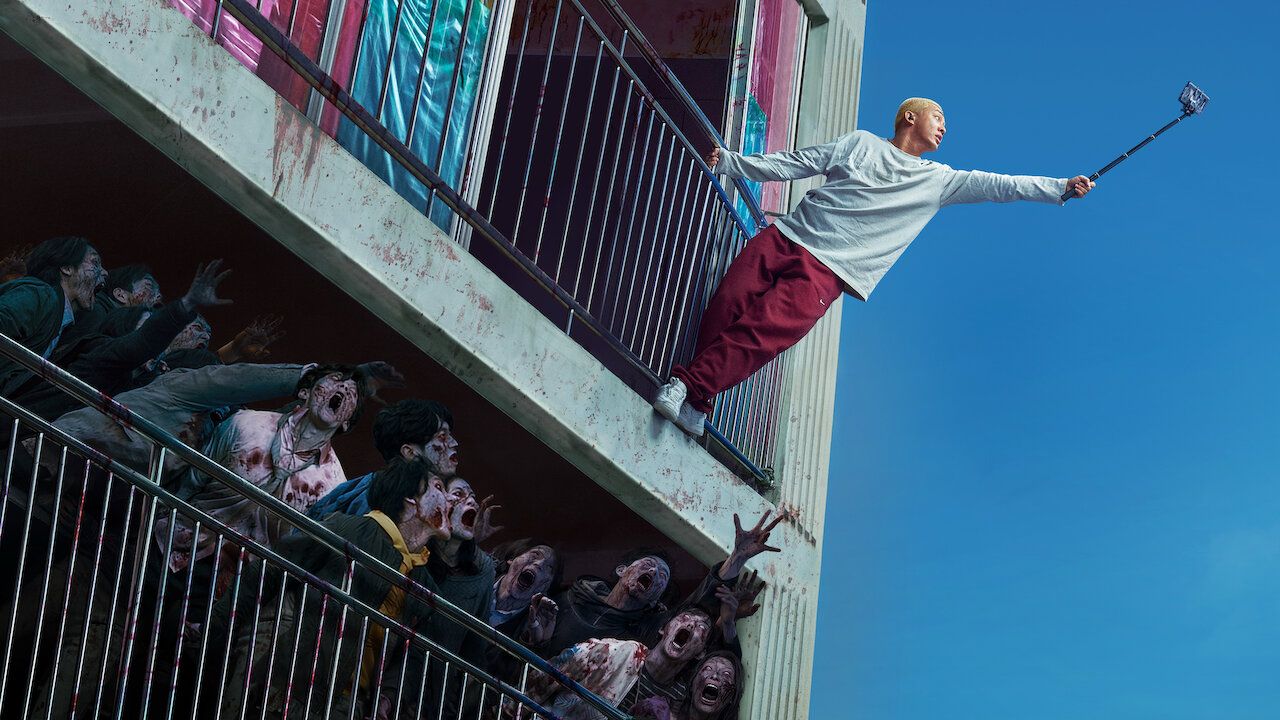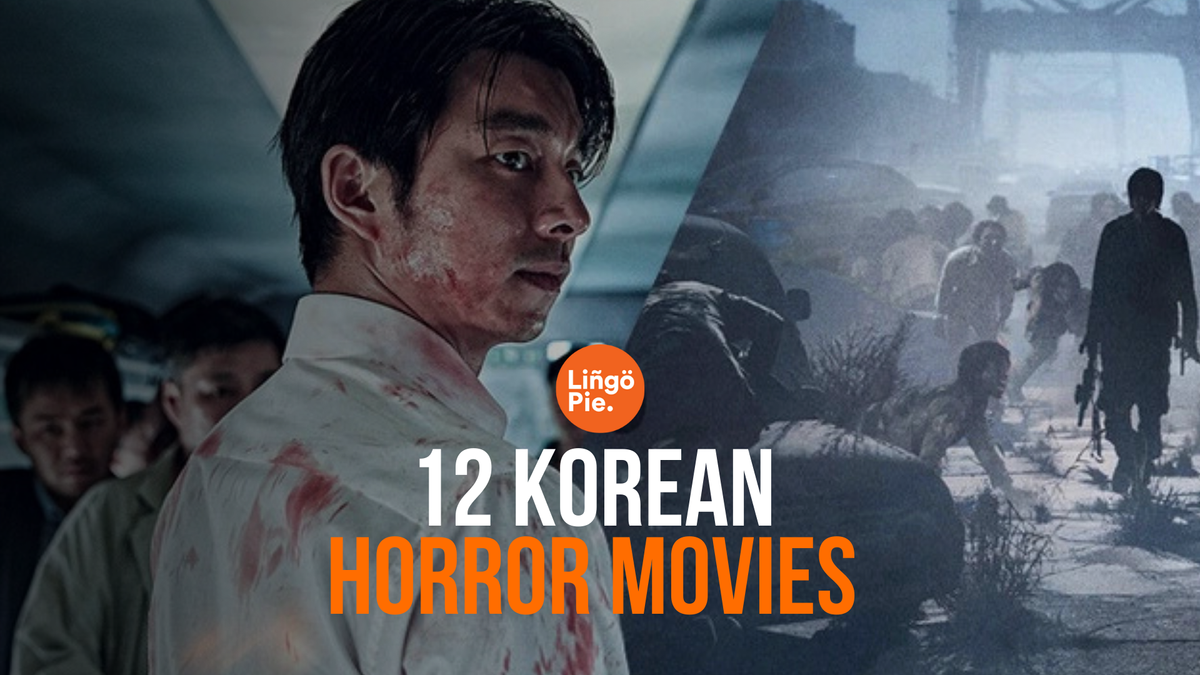Spooky season is here, and if you’re anything like me, you’re looking for the perfect lineup of horror movies to binge. Living in South Korea has given me access to some of the best (and creepiest) horror content out there, and trust me—Korean horror hits different. It’s not just jump scares. These movies mix in emotional depth, messed-up relationships, and social commentary that makes you think and scream.
And here’s the best part: you can use these movies to actually learn Korean. I’ve been using Lingopie while watching some of these gems, and it’s been a game-changer. You get immersive, real-life language without boring textbooks. Lingopie’s interactive subtitles let you tap words, hear native pronunciation, and save new phrases right as you watch. It’s giving… educational but fun vibes. Okay, enough talk—let’s dive into korean vocab for halloween then the horror list you need in your life.

Korean Halloween Vocabulary: Learn Some Spooky Words

With these phrases, you’ll be able to survive any haunted house and sound like a Halloween pro! Practice them while watching your favorite scary movies, and let Lingopie’s flashcards and dual subtitles help you cement them in your memory
1. Train to Busan (2016)

Zombies on a train… That’s the plot, but the execution? IMMACULATE. This isn’t just another zombie movie; it’s got heart, high-speed action, and some real tear-jerker moments. The outbreak affects the entire city, leading to widespread chaos and highlighting the dire consequences faced by the population. If you haven’t seen it yet, add it to your Halloween list ASAP. It’s also a vibe for language learners—the dialogue is clear, and you can snag survival phrases (literally) along the way.
2. Alive (2020)

This one’s for my introverts. Alive follows a gamer trapped in his apartment during a zombie outbreak, armed with just Wi-Fi, video games, and some questionable survival skills. It’s the perfect mix of funny and stressful, and you’ll pick up tons of everyday slang while watching.
3. The Call (2020)

Ever thought answering your phone could ruin your life? Same. The Call is a time-twisting thriller where two women, connected by a phone call from different timelines, start messing with fate. It’s giving mind blown moments all the way through.
4. Unlocked (2023)

This movie is basically every millennial and Gen Z’s nightmare—someone hacks your phone and ruins your life. If you’ve ever worried about oversharing online, this movie will hit hard. It’s full of tech-related terms, so if you’re trying to boost your vocab, this one’s a goldmine.
5. Gonjiam: Haunted Asylum (2018)

If you love haunted house content, Gonjiam is for you. It’s about a group of YouTubers exploring an abandoned asylum as part of a horror web series—and yeah, things get super cursed. The horror web series travels with the crew as they encounter unexpected and terrifying experiences in the eerie setting. The dialogue feels casual, making it great for picking up conversational Korean.
6. A Tale of Two Sisters (2003): Supernatural Elements

This one is pure psychological horror—no cheap scares here. It’s got eerie family drama, strange events, supernatural elements, and a whole lot of emotional trauma. Watching this helps you catch the mix of formal and emotional language used throughout. It’s perfect for learners looking to understand more nuanced conversations.
7. Seoul Station (2016)

If you loved Train to Busan, meet its animated prequel, Seoul Station. This one focuses more on the chaos that starts the zombie outbreak and digs deep into social issues like homelessness.
8. Thirst (2009)

This is not your typical vampire movie. Thirst follows Song Kang-ho as Sang-hyun, a Catholic priest who accidentally turns into a vampire after a botched medical experiment. It’s dark, sexy, and philosophical—everything you didn’t know you wanted from a horror flick. This one’s a bit advanced, but you’ll be picking up poetic language before you know it.
9. Death Bell (2008)

Imagine your high school exams, but if you fail, you die. Yeah, Death Bell is exactly that. This slasher-thriller features a serial killer, creating an intense narrative and psychological conflict. It is packed with intense puzzles and high school lingo, which makes it a great choice for picking up youth vocabulary.
10. The Mimic (2017)

The Mimic is inspired by a Korean urban legend about the Jangsan Tiger—a creature that mimics human voices to lure people into the forest. The film follows a family that encounters a lost child with an eerie resemblance to their missing son, leading them into a nightmare. It’s creepy in a slow-burn way, with unsettling atmosphere and folklore-inspired scares.
This movie is a perfect pick for language learners. You’ll encounter a blend of everyday conversations and eerie dialogue that heightens the suspense. The supernatural elements also introduce some fascinating Korean folklore, enriching both your vocab and cultural knowledge.
11. Host (2020)

Okay, this one’s actually in English, but hear me out—it’s perfect for fans of Korean horror because it was made entirely during the pandemic. It’s a creepy Zoom call gone wrong, and it shows how horror storytelling is evolving. With Lingopie, you can throw on Korean subtitles while watching to sneak in some extra language practice.
12. Cinderella (2006)

This isn’t your Disney princess fairy tale. Cinderella introduces a mysterious girl, a pivotal character shrouded in enigma and intrigue, taking a dark look at vanity and beauty standards, with a twist of family secrets. It’s haunting in a slow-burn kind of way. You will love this one for its poetic, eerie dialogue—plus, it’s a great way to learn descriptive Korean phrases.
Korean Horror Movie Directors and Their Signature Styles
Korean horror movie directors have significantly shaped the genre, each bringing their unique vision and style to the screen. Here are some of the most notable directors and their signature styles:
Park Chan-wook: Known for his visually stunning and atmospheric films, Park Chan-wook is a master of blending horror with psychological depth. His works often explore themes of trauma, desire, and the supernatural. Films like Thirst(2009), where a Catholic priest grapples with newfound vampiric urges, showcase his ability to intertwine horror with complex moral dilemmas.
Bong Joon-ho: A versatile director, Bong Joon-ho seamlessly balances horror and social commentary. His monster movie The Host (2006) is a prime example, critiquing government corruption and environmental negligence while delivering heart-pounding thrills. Bong’s ability to weave societal issues into his narratives sets him apart.
Kim Jee-woon: Known for his tense, atmospheric horror films, Kim Jee-woon excels in creating gripping narratives that explore trauma and grief. A Tale of Two Sisters (2003) is a testament to his skill, with its intricate plot and haunting visuals that delve deep into family dynamics and mental illness.
Na Hong-jin: A master of slow-burning horror, Na Hong-jin’s films are known for their atmospheric tension and complex storytelling. The Wailing (2016) is a standout, blending supernatural elements with a gripping mystery that keeps viewers on the edge of their seats.
Yeon Sang-ho: Balancing horror with elements of comedy, Yeon Sang-ho’s films often explore themes of class and societal issues. Train to Busan (2016) is a perfect example, combining high-speed zombie action with emotional depth and social commentary.
These directors have made significant contributions to Korean horror, pushing the boundaries of the genre and exploring new themes and ideas.
Where to Watch Korean Horror Movies in South Korea
If you’re in South Korea and looking to watch Korean horror movies, there are several options available. Here are a few:
- CGV Cinemas: As one of the largest cinema chains in South Korea, CGV often screens the latest Korean horror movies. Check their website for showtimes and locations to catch the newest releases.
- Lotte Cinema: Another popular cinema chain, Lotte Cinema, frequently features Korean horror films. Their website provides showtimes and locations, making it easy to find a screening near you.
- Korean Film Archive: For those interested in classic Korean horror movies, the Korean Film Archive is a treasure trove. They often screen rare and hard-to-find films, and the best part? Admission is free.
- Streaming Services: Many Korean horror movies are available to stream on platforms like Netflix, Amazon Prime Video, and KBS World TV. These services offer a wide selection of films with subtitles, making it convenient to watch from the comfort of your home.
Whether you prefer the big screen experience or the convenience of streaming, South Korea offers plenty of options to enjoy the best of Korean horror cinema.
Influence of Korean Horror on Global Cinema
Korean horror movies have left an indelible mark on global cinema, inspiring filmmakers and spawning numerous adaptations. Here are some ways Korean horror has influenced the world:
Remakes and Adaptations: Many Korean horror films have been remade or adapted into English-language films. For instance, the American film The Ring (2002) was influenced by the Korean horror film Ringu, showcasing the cross-cultural impact of these chilling tales.
Influence on Western Horror Films: Korean horror has inspired Western horror films, with directors like Jordan Peele and Ari Aster drawing from its unique blend of psychological depth and supernatural elements. Films like The Babadook(2014) and Get Out (2017) reflect this influence, incorporating similar themes and narrative techniques.
Inspiration for New Filmmakers: Korean horror films have inspired a new generation of filmmakers. Directors like Jordan Peele have cited Korean horror as an influence, using its techniques to craft their own unique horror narratives.
Global Recognition: Korean horror films have gained global recognition, with movies like Train to Busan (2016) and The Wailing (2016) receiving critical acclaim and commercial success. These films have introduced international audiences to the unique storytelling and thematic depth of Korean horror.
Cultural Exchange: Korean horror films have facilitated cultural exchange, allowing audiences worldwide to explore Korean culture and societal issues. Films like The Host (2006) and Thirst (2009) delve into themes of Korean identity and cultural beliefs, fostering a deeper understanding and appreciation of Korean cinema.
These examples demonstrate the significant influence of Korean horror on global cinema, inspiring new films and filmmakers and facilitating cultural exchange between Korea and other countries.
FAQs about Korean Horror Movies
1. Where can I stream Korean horror movies?
You can watch them on platforms like Netflix, Amazon Prime, and Lingopie, which offers Korean films with interactive subtitles to help you learn as you watch.
2. What is the scariest Korean horror movie?
A Tale of Two Sisters is often hailed as the most terrifying Korean horror film due to its psychological depth and haunting visuals. The film features Im Soo-jung and Yum Jung-ah in significant roles, contributing to its critical acclaim and impact on the South Korean horror genre. It was the highest-grossing Korean horror film and the first to be screened in American theaters.
3. Why are Korean horror movies so popular?
Korean horror blends emotional storytelling with top-tier suspense, addressing personal and societal fears in ways that resonate globally.
4. Can I improve my Korean by watching horror films?
Absolutely! Watching with Lingopie lets you pause, translate, and save new words, making it easy to pick up practical vocabulary while enjoying the movies.
5. Which Korean horror movie is best for beginners learning Korean?
Train to Busan is great for beginners—its dialogue is clear, and the fast-paced action will keep you hooked. Use Lingopieto follow along with subtitles and boost your skills.
Summing up
Korean horror movies are a treasure trove of psychological thrills, supernatural elements, and incisive social commentary. From the classics that laid the groundwork to modern hits that push the boundaries, Korean horror continues to evolve, offering something for every horror aficionado. Whether you’re into heart-pounding action or slow-burn suspense, these films promise a thrilling and thought-provoking ride. So, this Halloween, dim the lights, grab some popcorn, and dive into the mesmerizing world of Korean horror. Just remember – with Lingopie, you can learn Korean while you scream, making your spooky season both terrifying and educational.
해피 할로윈 aka Happy Halloween! 🎃👻






![11+ Best Shows On Netflix To Learn Korean [2025]](/blog/content/images/size/w300/2025/05/Best-Shows-On-Netflix-To-Learn-Korean.jpg)


